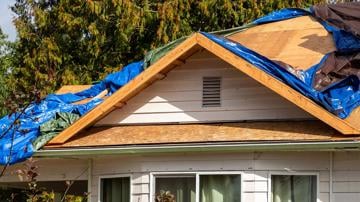Surviving a major storm is a cause for celebration, but once the worst has passed, there are other obstacles to be overcome on the path to recovery.
Immediately after
Before you go outside to inspect the damage, firstly make sure that the storm is actually over. If it is a cyclone, for instance, you could just be experiencing the calm weather in the storm’s ‘eye’, with more severe weather yet to come. Ideally, you should check local radio broadcasts for the all-clear before venturing outside.
When you do go out, make sure you are wearing boots and protective clothing and leave children and animals indoors. Scan the immediate area for hazards such as fallen power lines, leaking gas mains, damaged buildings and fallen trees.
Report fallen power lines and gas leaks immediately and return to the house to await the arrival of emergency services personnel. Emergency services and home insurance groups have estimated that up to half of storm-related injuries can occur after the storm has passed, so don’t take risks. Sit tight and wait for help.
Soon after
When the immediate dangers have been removed, it’s time to inspect the damage to your home. Do a walk around and look for obvious signs of damage such as missing roof tiles and broken windows. Depending on the severity of the storm, there may be structural damage as well, so write down everything you see or suspect and take photos.
Be careful when walking around your property. Look out for broken glass, nails and other debris. Also be on the lookout for snakes, which may have been forced to find shelter or higher ground during the storm. Use a stick to poke through debris, rather than your hands. When you have made a thorough inspection, call your house insurance provider and report the damage. They will send someone to inspect it in due course.
In the meantime, beware of door-to-door contractors who may show up, offering to repair your home. Sign nothing, ask to see their licence or accreditation and check with your insurance company before hiring anyone to undertake repairs.
Over time
A major storm can be a traumatic event for everyone and some after-effects may take a little while to become apparent. Feelings of sadness, anger and anxiety are often experienced by those who have gone through a disaster and emotional scars can take time to heal. Everyone reacts in different ways, but recognising your feelings and allowing others to help you is the best way to start the healing process.
Children are especially vulnerable and need reassurance that what has happened will not happen to them again. Reassure them as much as you can and try to re-establish patterns of normalcy in their lives as soon as possible.
Knowing what to do after a severe storm can be just as important as taking the correct precautions before it arrives. Above all else, keep a level head, tackle problems one by one as they arise and keep reminding yourself of the most important thing of all: that you and your family are safe and well.



